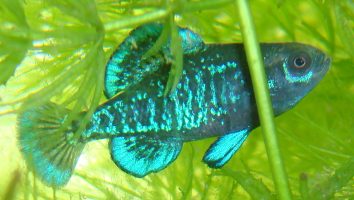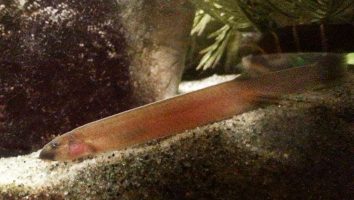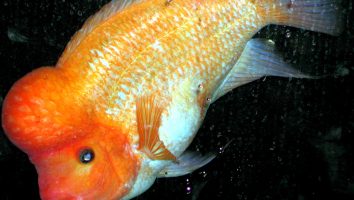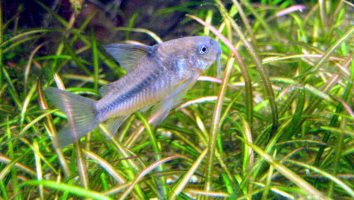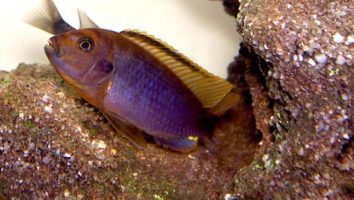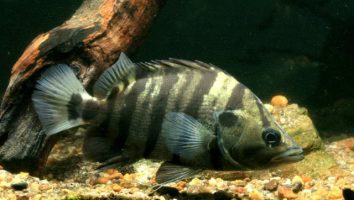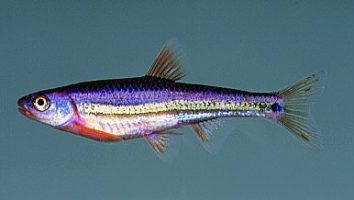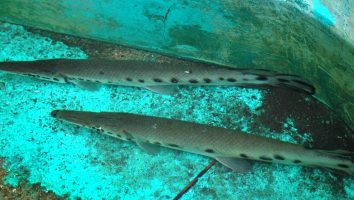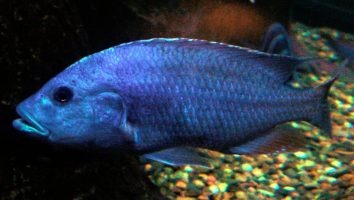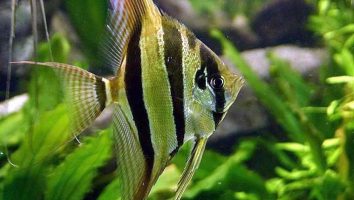The Warmouth is a freshwater fish that is native to North America. It is a member of the sunfish family and is closely related to the Pumpkinseed sunfish.
The Warmouth is a popular fish for aquariums and can be found in pet stores across the country.
This fish is easy to care for and is a good choice for beginner fishkeepers. In this guide, we will go over everything you need to know about Warmouth care.
Table of contents
Species overview
The warmouth (scientific name: Lepomis gulosus) is a species of freshwater fish that’s found in various parts of North America.
They prefer habitats with a lot of vegetation, such as marshes, swamps, and ponds. However, they are also known to live in areas with faster moving water, such as streams and rivers.
Warmouth are opportunistic feeders and will eat a variety of different food items, including insects, small fish, and crustaceans.
These fish are relatively small, only growing to be about 6-8 inches in length. However, they are known to be quite aggressive, especially when it comes to spawning.
Warmouth are popular game fish and are often caught by anglers. They are also popular in the aquarium trade, although they can be aggressive toward other fish.
Appearance
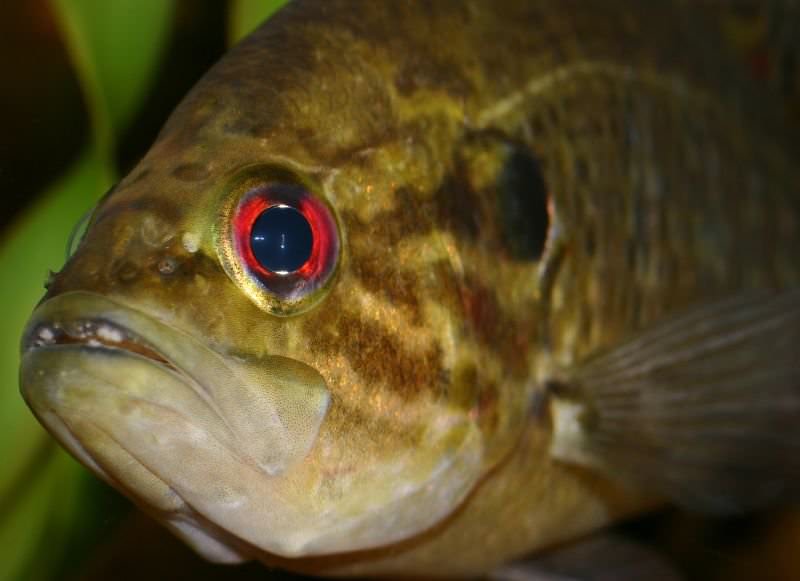
The Warmouth is a freshwater fish that is a part of the sunfish family. As such, they share many similarities with other sunfish.
The first thing you’ll notice about the Warmouth is their unique coloration. The body of the fish is a dark greenish-brown. This gets lighter as you move towards the belly of the fish which is a pale yellow.
There are a few dark spots on their body, but these are more prominent on the fins than the body itself. The dorsal and anal fins have a dark band running through the center. The dorsal fin also has a dark spot at the base.
The caudal fin is forked and has a dark spot near the base on each lobe. The pectoral fins are dark green and the ventral fins are yellow.
Warmouth have a rather large mouth that extends past their eyes. They have sharp teeth that they use to eat smaller fish and insects.
Their body is deep and compressed with a small head. The eyes are large and located on the top of the head.
Warmouth can grow to be about 12 inches long.
Lifespan
Warmouths have a lifespan of around 3 to 5 years in captivity. As with most fish, their lifespan can be impacted by a number of different factors.
One of the biggest things that will affect their lifespan is the quality of the water they’re kept in. If the water is too cold or has poor water quality, their lifespan will be significantly shortened.
Another big factor is their diet. If they’re not getting the right nutrients, they won’t live as long as they could.
Size
The Warmouth can grow to be about 6-8 inches (15-20 cm) in length.
Tank
Tank Size
The recommended tank size for a single Warmouth is 30 gallons. If you’re looking to keep a school of them, you should add an additional 10 gallons for each fish.
Warmouth are a peaceful fish but they can be a bit nippy so it’s best to keep them with fish that are similar in size. They also prefer to have a lot of hiding places so be sure to add plenty of plants and other decorations to their tank.
Water Parameters
The warmouth is a freshwater fish that is native to parts of the United States. They prefer habitats with murky water and plenty of hiding places.
Warmouths are not terribly sensitive to water conditions but will do best in water that falls within the parameters below.
- Water Temperature: 60°F to 80°F
- pH Levels: 6.5 to 8.0
- Water Hardness: 2 to 12 dGH
- Alkalinity Levels: 4 to 8 dKH
What To Put In Their Tank
When it comes to setting up the inside of their tank, Warmouth are not very picky. Most substrates will work just fine for them.
We recommend going with a classic gravel substrate. This is easily the most popular choice for freshwater tanks and there’s a reason for that. It’s easy to maintain and looks great too.
If you want to switch things up a bit, then you can go with a sand substrate instead. This can be a little nicer for fish that spend a lot of time at the bottom of the tank. Just be aware that it can be a bit more difficult to keep clean.
When it comes to plants, there are a few different options you can go with. If you want something that’s easy to care for then we recommend Hornwort or Water Wisteria.
Both of these plants are very hardy and can tolerate a wide range of conditions. They’re also known to do well in tanks with fish that like to dig (like Warmouth).
If you’re looking for something a little more unique then you can go with Java Moss or Anubias. These plants are a bit more delicate, but they can add a very nice touch to a tank. Just be aware that you might have to put in a little more work to keep them alive.
Common Diseases
Warmouth are a hardy fish that don’t typically fall ill very often. However, there are still a few diseases that you should be aware of.
The most common one is parasites. These can take many different forms, but the most common one is ich. This will show itself as white spots on the body, fish, and gills of your fish.
While parasites are the most common disease, there are a few others that have been known to affect Warmouth. These include bacterial infections, fungal infections, and viruses.
The best way to prevent your fish from getting sick is to maintain a clean and stable environment. This means regular water changes, filtering the water, and keeping the tank clean.
A healthy diet is also important. Make sure you’re feeding your fish a high-quality food that contains all the nutrients they need.
If you notice anything out of the ordinary with your fish, the best thing to do is to consult a vet. They will be able to diagnose the problem and prescribe the appropriate course of treatment.
Behavior & Temperament
The warmouth is a predatory fish, so it’s not recommended for most home aquariums. It’s an opportunistic feeder that will eat just about anything it can fit in its mouth. This includes other fish, crustaceans, insects, and worms.
The warmouth is also a very aggressive fish. It’s not afraid to fight for food or territory. If you do decide to keep one, it’s best to do so in a large tank with plenty of hiding places. That way, the warmouth can’t corner its tank mates and will be less likely to attack them.
These fish are also known for being jumpers. They’re constantly on the move and can easily jump out of an uncovered tank. So, if you decide to keep a warmouth, make sure your tank is secure.
Overall, the warmouth is a beautiful but dangerous fish. It’s not recommended for most home aquariums.
Tank Mates
Warmouths are generally peaceful fish. They’re not known to be overly aggressive or territorial.
This makes them good candidates for community tanks. You can mix them with other peaceful fish without having to worry about too much conflict.
In terms of specific species, there are a few warmouth tank mates that tend to work well. These fish occupy different levels of the water column, which helps create a more balanced ecosystem.
Some good warmouth tank mates include:
- Bluegill
- Pumpkinseed
- Green Sunfish
- Longear Sunfish
- Redbreast Sunfish
- Crappie
- Yellow Perch
- White Bass
Breeding
Warmouths are another easy fish to breed in captivity. These fish don’t need a lot of special attention. In fact, they will probably spawn without you even trying!
Warmouths reach maturity at around one year of age. At that point, they will start to breed in the spring and summer.
The first step is to set up a breeding tank. It should be at least 20 gallons in size. Then, add some live plants and a few hiding places. Driftwood is a good option.
Warmouths are egg-layers. The female will lay her eggs in the plants or on the driftwood. After that, the male will fertilize them.
Once the eggs are fertilized, the male will guard them. He will also fan them with his fins to keep them oxygenated.
The eggs will hatch in about a week. Once they do, you can remove the adults and start feeding the fry live foods. They will also eat brine shrimp and other baby foods.
Conclusion
The warmouth is a great fish for beginners and experienced aquarists alike. They’re easy to care for and can adapt to a wide range of water conditions.
They’re also a lot of fun to watch, as they’re always on the move and exploring their surroundings.
If you’re looking for a hardy fish that will add some personality to your tank, the warmouth is a great choice!

